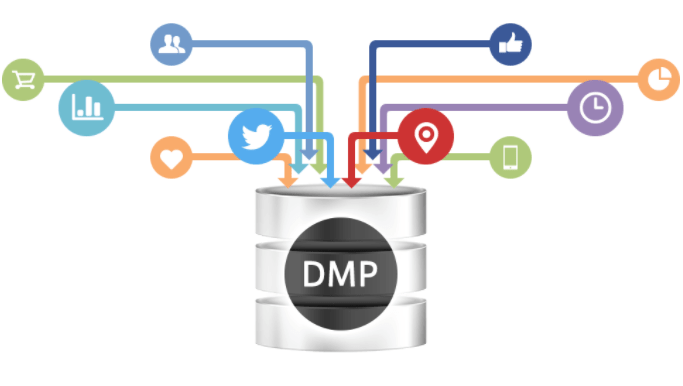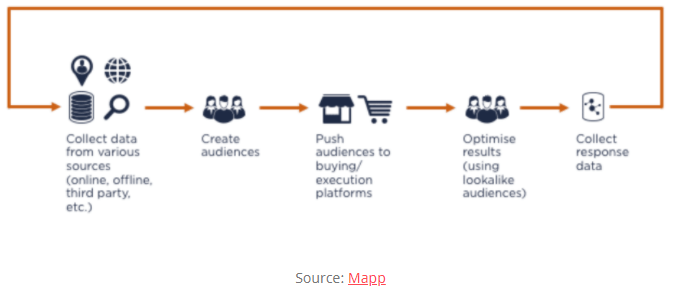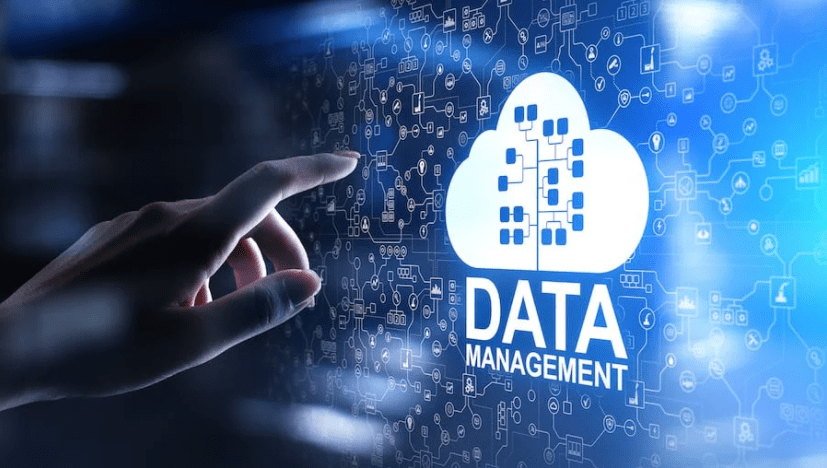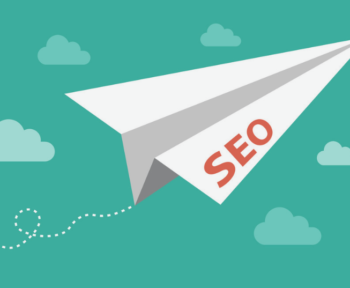As digital media becomes more complex and more consumer data is created and collected on a daily basis, marketers, agencies, and publishers need better ways to buy, sell and manage audience data beyond the standard analysis tools suite. It happens. How do you capture all this valuable audience data, format it insightfully, and activate it to drive results?
Table of Contents
What is a Data Management Platform (DMP)?
The Data Management Platform (DMP) is a unified platform for collecting, managing, and activating first, second and third-party audience data from any source, including online, offline, mobile, and others. It is the backbone of data-based marketing and allows businesses to gain unique insights about their customers.
DMP- Analysis of yesterday, today
Data is everything
As a marketer, data is your best resource. That’s why you need the right tools to manage your critical audience data assets. To gain in-depth knowledge about your customer, you need a robust data management platform (DMP) that can be used in all programs.
Quality data ensures that marketers are able to deliver targeted, personalized messages to buyers that are supported through the purchasing process in a natural way. However, collecting, analyzing, managing, and acting on these first and third-party data is a critical challenge.
It is important to define what kind of data is most useful in terms of messaging, engagement — and ultimately ROI. Unnecessary data compromises your marketing automation system and leads to creating a single view of your customer. An advanced DMP allows you to safely analyze and improve your dataset so that only the most accurate data can provide your marketing efforts.
What does DMP do?
DMP collects and manages data from a variety of first-, second and third-party data sources and makes it available to other platforms such as DSPs, SSPs, and ad converters used for targeted advertising, personalization, and content optimization. And beyond. Some refer to data management platforms as the “pipe” of advertising technology – most linked platforms are in a neutral way so marketers can use their powerful audience data whenever and wherever they want.
How does DMP work?
DMP can collect non-structured audience data from any number of sources, including desktop, mobile web, mobile apps, web analytics tools, CRM, point of sale, social, online video, offline, and TV. Real DMP URL and keyword information should be kept away from collecting more audience data from the surface level.
This first-party data – data you collect on your own and directly from your own customers – can be collected based on specific behaviors, such as clicks, downloads, video uploads or video completion, sports, football, parenting, museums. Travel or population information. It also includes demographic data, socio-economic data, influencer, and action data. For example, a business can use DMP to collect and manage data and then use that data to target specific ads targeting 25-35 moms, DMP has endless applications.
- Web Analysis Tools
- Mobile web (mobile marketing)
- Mobile apps
- Behavioral and demographic data
- CRM data
- Point-of-sale data
- Social networks
- Online videos
- TV data
- Even more!
What happens after data is collected?

Once first-party data is collected, it is organized into a series of sections called “hierarchies”, which may vary depending on each end user’s business model. The hierarchy of a large publisher network can be divided into different buckets based on each website they own. An agency may have separate accounts for each of its advertiser clients. Marketers can manage data separately from different brands, while at the same time having a more comprehensive view of the data at the top level.
Once categorized, all of this data can be used to better understand your audience, create effective RFP responses, help your audience learn more about them, and reach out to your audience for promotional commitments. Can increase. In short, all of your audience data is gathered in one place to quickly and easily understand who your best customers are, what content they interact with, and how to reach them effectively.
There are 4 basic steps to get started with DMP; Let’s review them here:
1. Organization
As specified by those who use the platform, DMP manages your first-party audience data into categories and classifications – in this case, it is you. You define how that data is handled, which means you need to understand – and define – what you need from your data before you can implement DMP. Also, learn about marketing automation.
2. Segmenting and Audience Building
After arranging the data into segments on the platform, you can use this information to build an audience for specific marketing campaigns. For example, one retailer may target a specific ad for women aged 18-34, while another may often focus on men who buy shoes online. Regardless of who they are trying to contact, marketers, publishers, and advertisers rely on audience segments to power their data-based campaigns and reach the right customers at the right time.
3. Insights and audience profile reports
As soon as the data is organized and categorized, you can analyze it to understand customer patterns, trends, and intent.
The audience profile report provides an in-depth look at the characteristics and interests of each “audience” created on the platform. This information will be used to inform you of your future creativity and messages.
4. Activation
Activating data by committing is the last step! This activation step is based on the integration of DMPs with other platforms and open APIs to deliver the audience you create in DMPs to DSPs, SSPs, and beyond. The most common DMP usage context is to run targeted campaigns via DSP to specific audiences. Or, you can connect DMP to your Content Management System (CMS) to adjust your website content for specific audience groups. The possibilities and usage scenarios for data activation with DMP are unlimited.
What data points can I use to build an audience?

You may already know your audience population and goals and this is a good place to start building an audience. Here are some data points you can use to build your audience:
- Ages
- Gender
- Place or region
- Interests
- Browsing history
- Household income
- House size
- Feedback – e.g., all customers who have subscribed to X. Like / dislike
- Social Networks – e.g., Facebook Vs. Twitter
If you do not have enough first-party data to create the audience you need, DMPs should provide access to second-and third-party data to help your campaigns reach your audience goals. Not sure how to choose which data to buy? Read more about second-party data and third-party data here.
Who can benefit from using the Data Management Platform?

Professionals and businesses from every industry around the world can benefit from DMP. Higher or C-level management can rely on DMP to make intelligent and more informed decisions. IT or networking professionals can rely on DMPs to manage and operate the company-wide system by gaining insights from the tools used to select machines, software, and more.
Basic business cases for DMP can be divided into three groups: publishers, marketers, and agencies.
Reasons why marketers need a Data Management Platform
The data management platform provides a platform for companies to have centralized control over all campaign and audience data. Having a centralized data solution enables individual marketers to create and analyze customer data and to design, target, and optimize outbound campaigns that target the right opportunities at the right time for increased ROI.
Here are nine reasons why every marketer needs an industry-leading DMP solution:
- Conduct multiple online campaigns across different devices.
- Connect all customer and promotional data — from known to anonymous, online or offline,
- decisive or probable.
- Increase data assets.
- Increase segmentation and mass marketing campaigns.
- Prevent data leakage with established partners.
- Prepare for the future of the program.
- Optimize marketing campaigns to improve reach, response rates, and conversions.
- Control advertising costs and improve overall marketing returns on investment.
- Increase accountability in marketing and advertising.
Hope! You find this content informative. Don’t forget to subscribe and leave Your comments in the description below. Thank You.






1 Comment